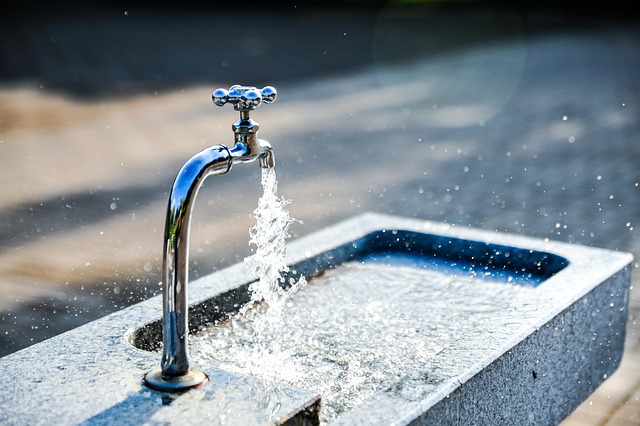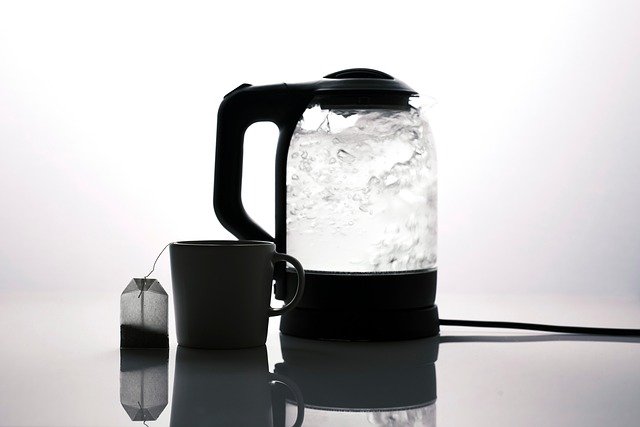TL;DR: Proper pipe sizing is essential for effective water flow management, preventing sediment buildup, and avoiding clogs in residential and commercial plumbing systems. Factors like soil composition, water velocity, pipe size, material, and maintenance practices influence sediment ingress. Engineers use formulas or software to determine optimal pipe diameters, balancing water velocity, pressure drop, and sediment accumulation to ensure smooth water movement and prevent future blockages. Regular inspections and maintenance are crucial for addressing high sediment levels and debris-carrying water sources, saving costs and minimizing disruptions.
Proper pipe sizing is crucial for maintaining efficient water flow, minimizing sediment buildup, and preventing clogs. This comprehensive guide explores the impact of pipe sizing on water flow performance, delving into key factors influencing sediment accumulation, providing calculation methods for optimal diameter selection, and offering maintenance strategies to keep pipes unclogged. By understanding these aspects, you can ensure a smooth, high-performance plumbing system.
- Understanding Pipe Sizing and Its Impact on Water Flow
- Identifying Factors Affecting Sediment Buildup in Pipes
- Calculating Optimal Pipe Diameter for Specific Water Flow Requirements
- Maintaining Pipe Sizing to Prevent Clogging and Blockages
Understanding Pipe Sizing and Its Impact on Water Flow

Understanding pipe sizing is paramount in ensuring optimal water flow within any plumbing system. The diameter and material of pipes play a pivotal role in dictating the volume and velocity of water that can pass through them. Smaller pipes, for instance, may lead to reduced flow rates, allowing sediment buildup over time, while larger ones can handle higher volumes but must be designed to prevent excessive pressure drops.
Pipe sizing considerations are especially crucial in residential and commercial settings where water demand fluctuates. Proper sizing ensures efficient distribution of water throughout buildings, minimizing the risk of clogs and backflows caused by varying water pressures. By understanding these dynamics, professionals can select pipes that not only support adequate flow but also withstand the challenges posed by mineral deposits, corrosion, and other environmental factors, thus maintaining a robust and reliable water supply system.
Identifying Factors Affecting Sediment Buildup in Pipes

The factors contributing to sediment buildup in pipes are multifaceted, and understanding them is crucial for maintaining optimal water flow. One primary factor is the type of soil surrounding the pipes. Different soil compositions have varying densities and textures, which influence how much sediment can accumulate. For instance, loose, sandy soils are more prone to allowing sediment ingress into pipes, while compacted clay might reduce buildup but could also lead to increased pressure on pipe walls over time.
Flow velocity is another critical aspect. Slower water currents tend to drop sediments, leading to their accumulation in low-flow areas. Conversely, faster flows can prevent sediment deposition but must be carefully managed to avoid erosion and other potential issues. Additionally, the size and shape of pipes play a significant role, as do operational factors such as water quality and regular maintenance practices. Proper pipe sizing considers all these variables to ensure minimal sediment buildup, thereby maintaining efficient water flow.
Calculating Optimal Pipe Diameter for Specific Water Flow Requirements

To ensure optimal pipe sizing for water flow, calculating the required diameter is crucial, especially considering specific flow requirements and potential challenges like sediment buildup. Engineers often use formulas or specialized software to determine this. The process involves balancing water velocity, pressure drop, and the need to prevent rapid sediment accumulation. For instance, a higher flow rate may require a larger pipe diameter to maintain minimal velocity and avoid debris accumulation that can clog pipes over time.
The optimal diameter should allow for smooth water movement while considering the volume of water needed to meet demand. In cases where sediment buildup is a concern, larger diameters can reduce velocity, minimizing the impact of particulate matter. This calculation requires careful analysis of factors like expected flow rates, pipe material compatibility with water chemistry, and maintenance considerations to prevent future blockages.
Maintaining Pipe Sizing to Prevent Clogging and Blockages

Proper pipe sizing is essential to maintain smooth water flow and prevent clogging issues. One common problem that can arise from inappropriate pipe dimensions is sediment buildup. When pipes are too small for the volume of water flowing through them, it creates turbulence, causing particles in the water to settle out and accumulate over time. This sediment buildup can lead to obstructions, reducing water pressure and potentially causing pipes to back up.
Regular maintenance involves inspecting pipes for any signs of clogging and ensuring they are sized appropriately for the expected water flow rates. By preventing clogs and blockages, you avoid costly repairs and disruptions to your plumbing system. This is especially crucial in areas prone to high sediment levels or where water sources may carry debris, as proper pipe sizing can act as a safeguard against these issues, keeping your water supply running efficiently.
